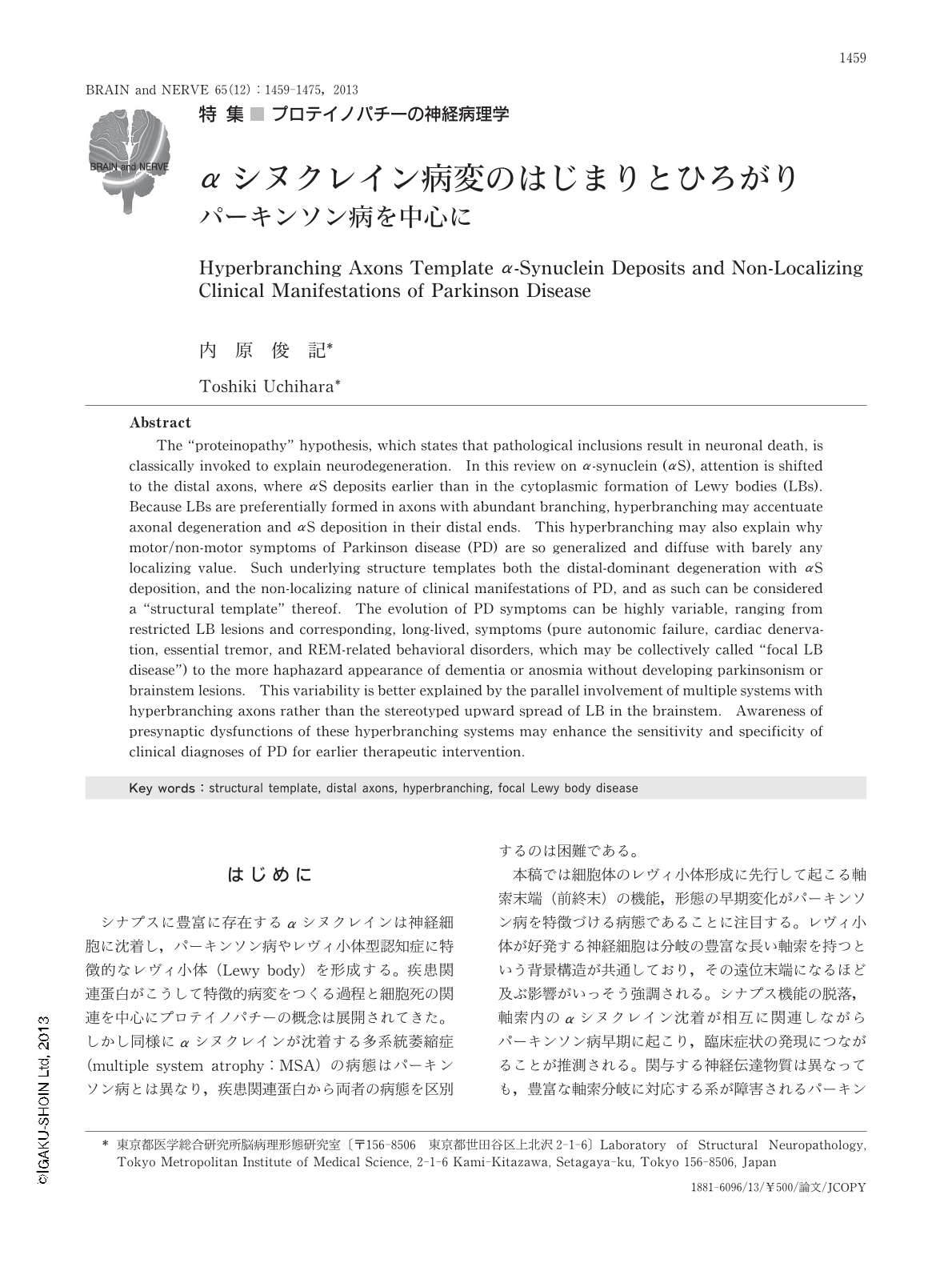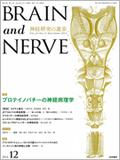Japanese
English
- 有料閲覧
- Abstract 文献概要
- 1ページ目 Look Inside
- 参考文献 Reference
はじめに
シナプスに豊富に存在するαシヌクレインは神経細胞に沈着し,パーキンソン病やレヴィ小体型認知症に特徴的なレヴィ小体(Lewy body)を形成する。疾患関連蛋白がこうして特徴的病変をつくる過程と細胞死の関連を中心にプロテイノパチーの概念は展開されてきた。しかし同様にαシヌクレインが沈着する多系統萎縮症(multiple system atrophy:MSA)の病態はパーキンソン病とは異なり,疾患関連蛋白から両者の病態を区別するのは困難である。
本稿では細胞体のレヴィ小体形成に先行して起こる軸索末端(前終末)の機能,形態の早期変化がパーキンソン病を特徴づける病態であることに注目する。レヴィ小体が好発する神経細胞は分岐の豊富な長い軸索を持つという背景構造が共通しており,その遠位末端になるほど及ぶ影響がいっそう強調される。シナプス機能の脱落,軸索内のαシヌクレイン沈着が相互に関連しながらパーキンソン病早期に起こり,臨床症状の発現につながることが推測される。関与する神経伝達物質は異なっても,豊富な軸索分岐に対応する系が障害されるパーキンソン病の臨床症状は局在性に乏しく,影響も全体的な点で共通する。この病態を念頭にシナプス前終末の早期変化を捉えて診断できれば,細胞死が起こる前の治療介入も可能になる。
Abstract
The "proteinopathy" hypothesis, which states that pathological inclusions result in neuronal death, is classically invoked to explain neurodegeneration. In this review on α-synuclein (αS), attention is shifted to the distal axons, where αS deposits earlier than in the cytoplasmic formation of Lewy bodies (LBs). Because LBs are preferentially formed in axons with abundant branching, hyperbranching may accentuate axonal degeneration and αS deposition in their distal ends. This hyperbranching may also explain why motor/non-motor symptoms of Parkinson disease (PD) are so generalized and diffuse with barely any localizing value. Such underlying structure templates both the distal-dominant degeneration with αS deposition, and the non-localizing nature of clinical manifestations of PD, and as such can be considered a "structural template" thereof. The evolution of PD symptoms can be highly variable, ranging from restricted LB lesions and corresponding, long-lived, symptoms (pure autonomic failure, cardiac denervation, essential tremor, and REM-related behavioral disorders, which may be collectively called "focal LB disease") to the more haphazard appearance of dementia or anosmia without developing parkinsonism or brainstem lesions. This variability is better explained by the parallel involvement of multiple systems with hyperbranching axons rather than the stereotyped upward spread of LB in the brainstem. Awareness of presynaptic dysfunctions of these hyperbranching systems may enhance the sensitivity and specificity of clinical diagnoses of PD for earlier therapeutic intervention.

Copyright © 2013, Igaku-Shoin Ltd. All rights reserved.


